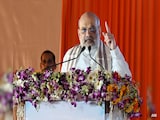Ukraine's president and the UN nuclear agency head are sounding the alarm about increased safety risks at the Russia-occupied Zaporizhzhia Nuclear Power Plant in southern Ukraine, which lost its external power supply more than a week ago as the war raged around it.
Emergency diesel generators are providing power for crucial cooling systems for the facility's six shutdown reactors and spent fuel, and there is no immediate danger to Europe's biggest nuclear plant, according to International Atomic Energy Agency Director-General Rafael Mariano Grossi.
But "it is clearly not a sustainable situation in terms of nuclear safety," he said.
The backup generators have never needed to run for so long, according to Ukrainian President Volodymyr Zelensky.
"The generators and the plant were not designed for this," Zelensky said late Tuesday, describing the situation as "critical".
Zaporizhzhia is one of the 10 biggest nuclear plants in the world, and its fate amid the fighting has caused fears of a potential nuclear catastrophe. Russian forces seized it days after the full-scale invasion of neighbouring Ukraine began on Feb. 24, 2022.
The tension around the nuclear plant's safety has added to broader concerns about the course of the war, which shows no signs of ending after a US-led effort this year to stop the fighting came to nothing.
European leaders, spooked by violations of their airspace by unidentified drones and Russian warplanes, gathered Wednesday in Denmark for two summits centred on security, defence and the war in Ukraine.
Zelensky blamed Russian artillery for cutting the power line to the Zaporizhzhia plant, but Kremlin spokesman Dmitry Peskov said it was Ukrainian shelling.
Peskov told reporters Wednesday that it was "stupid to accuse the Russian side of shelling the plant it controls."
The Vienna-based IAEA has been walking a tightrope in the war, eager to maintain access to nuclear facilities and issuing warnings about the dangers without angering either side. Ukraine has four nuclear plants, though Zaporizhzhia is the only one in Russian hands.
Grossi said that Zaporizhzhia's emergency generators were coping with the extra strain so far.
"The current status of the reactor units and spent fuel is stable as long as the emergency diesel generators are able to provide sufficient power to maintain essential safety-related functions and cooling," he said in a statement late Tuesday.
An IAEA team at the plant reported that it has fuel reserves ensuring the generators can operate for more than 10 days, with regular off-site supplies maintaining this level.
"Nevertheless, it is extremely important that off-site power is restored," Grossi said, adding that he was in touch with Russian and Ukrainian officials about how to swiftly reconnect the plant to the grid.
As Russia's invasion churns across the Ukrainian countryside, the Zaporizhzhia facility has repeatedly been caught in the crossfire.
It lost its off-site power for the 10th time during the war on Sept. 23, when its only remaining power line was damaged by military activity about 1½ kilometres (a mile) from the plant, the IAEA statement said.
Eight emergency diesel generators are operating, with nine additional units in standby mode and three in maintenance, according to the IAEA.
It said that over the past week, the plant has been alternating those in use and servicing idle generators in an effort to ensure continuous availability.
(Except for the headline, this story has not been edited by NDTV staff and is published from a syndicated feed.)














